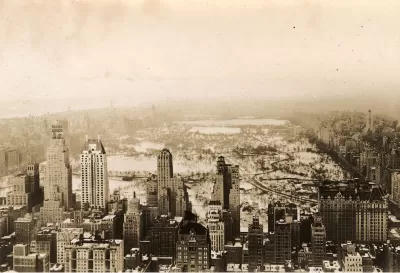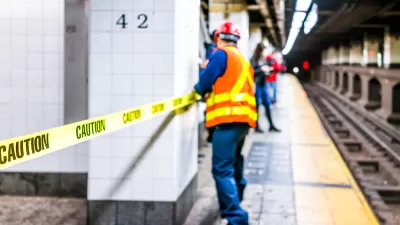Some of the most beloved public parks and essential advances in public sanitation can be traced back to their roots in the Cholera outbreaks in the 1800s.

When cholera claimed the lives of 3,500 residents in a matter of weeks after it reached New York City in the summer of 1832, the disease was considered to be a result of noxious air. Filthy city streets filled with human waste, animal excrement, and garbage caused terrible odors known as "miasma" that were believed to be responsible for the spread of disease.
Misguided fear of miasma had a lasting impact on the built environment. "Miasma theory proponents advocated for better ventilation, drainage and sanitary practices to rid cities of foul-smelling, malevolent air," asserts Christopher Klein. New York's cholera response ended up "spurring urban design elements such as wide boulevards and parks that transformed New York and other major cities into the iconic metropolises we know today." City officials also constructed an over 40-mile aqueduct system designed to carry potable drinking water from north of the city.
Assistant professor of architecture, urbanism, and landscape at Northeastern University Sara Jensen Carr adds that streets were paved to allow waste that exposed the public to miasmic gases to be more easily washed away into underground wastewater infrastructure. Public desire for refuge from the deadly air during the second outbreak led to the planning and construction of Central Park designed by Frederick Law Olmsted who would go on to design more than 100 public parks.
In London, a connection between cholera infection and leaking sewage was made by physician John Snow in 1854. The isolation of the cholera-causing bacterium accomplished by Italian anatomist Filippo Pacini was not widely trusted for decades. 19,000 Parisians died as the result of a 1848 outbreak the year Emperor Napoleon III came to power. "Under the direction of Baron Georges-Eugène Haussmann, French authorities tore down 12,000 buildings, built tree-lined boulevards and parks, erected fountains and installed an elaborate sewage system," writes Klein.
While cholera took the lives of tens of thousands of people worldwide, responses to the disease resulted in discoveries in public sanitation and urban design interventions with a lasting impact on the built environment in some of the most famous cities in the world.
FULL STORY: How Pandemics Spurred Cities to Make More Green Space for People

Planetizen Federal Action Tracker
A weekly monitor of how Trump’s orders and actions are impacting planners and planning in America.

Congressman Proposes Bill to Rename DC Metro “Trump Train”
The Make Autorail Great Again Act would withhold federal funding to the system until the Washington Metropolitan Area Transit Authority (WMATA), rebrands as the Washington Metropolitan Authority for Greater Access (WMAGA).

The Simple Legislative Tool Transforming Vacant Downtowns
In California, Michigan and Georgia, an easy win is bringing dollars — and delight — back to city centers.

The States Losing Rural Delivery Rooms at an Alarming Pace
In some states, as few as 9% of rural hospitals still deliver babies. As a result, rising pre-term births, no adequate pre-term care and harrowing close calls are a growing reality.

The Small South Asian Republic Going all in on EVs
Thanks to one simple policy change less than five years ago, 65% of new cars in this Himalayan country are now electric.

DC Backpedals on Bike Lane Protection, Swaps Barriers for Paint
Citing aesthetic concerns, the city is removing the concrete barriers and flexposts that once separated Arizona Avenue cyclists from motor vehicles.
Urban Design for Planners 1: Software Tools
This six-course series explores essential urban design concepts using open source software and equips planners with the tools they need to participate fully in the urban design process.
Planning for Universal Design
Learn the tools for implementing Universal Design in planning regulations.
Smith Gee Studio
City of Charlotte
City of Camden Redevelopment Agency
City of Astoria
Transportation Research & Education Center (TREC) at Portland State University
US High Speed Rail Association
City of Camden Redevelopment Agency
Municipality of Princeton (NJ)




























